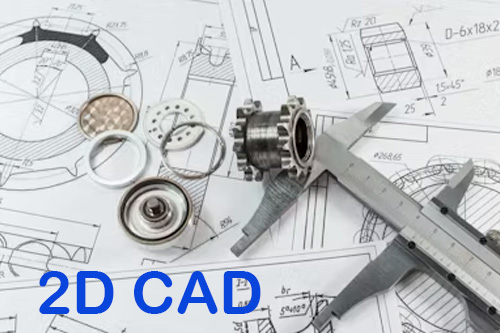Overview:
This comprehensive program is designed to provide individuals with the essential knowledge and skills needed to create detailed 2D and 3D drawings, models, and designs using CAD (Computer-Aided Design) software. CAD is a critical tool in various industries such as engineering, architecture, interior design, product design, and manufacturing. This course covers a broad spectrum of CAD techniques and applications, equipping participants with the expertise required to excel in these fields. Proficiency in CAD software is highly valued, and this program ensures participants are well-prepared to meet industry demands and contribute effectively to detailed design and modeling projects.
Course Content:
- Introduction to CAD:
-
- Overview of CAD: Understanding the role and importance of CAD in different industries, including engineering, architecture, interior design, and manufacturing.
- CAD Software Introduction: Familiarization with popular CAD software such as AutoCAD, SolidWorks, and Revit, including their interfaces and basic functionalities.
- 2D Drawing Techniques:
-
- Basic Drawing Tools: Introduction to fundamental drawing tools and commands for creating precise 2D drawings.
- Drafting Standards: Understanding and applying drafting standards and conventions, including dimensioning, annotations, and layering.
- Technical Drawing: Creating technical drawings, including floor plans, elevations, and sections for architectural and engineering applications.
- 3D Modeling Techniques:
-
- Basic 3D Modeling: Introduction to 3D modeling tools and techniques, including creating basic 3D shapes and manipulating objects in a three-dimensional space.
- Advanced 3D Modeling: Techniques for creating complex 3D models, including extrusion, lofting, and surface modeling.
- Parametric Modeling: Using parametric design tools to create models that can be easily modified and adjusted based on changing parameters.
- CAD Software Applications:
-
- AutoCAD: Comprehensive training in AutoCAD for 2D drafting and 3D modeling, including advanced features like dynamic blocks and custom tool palettes.
- SolidWorks: In-depth exploration of SolidWorks for 3D modeling, including creating assemblies, detailed parts, and simulations.
- Revit: Techniques for using Revit in building information modeling (BIM) for architectural design, including creating building components and managing project data.
- Technical Documentation:
-
- Drawing Production: Techniques for producing detailed technical drawings, including creating layouts, printing, and plotting.
- Documentation Standards: Understanding industry standards for technical documentation, including title blocks, revision management, and project specifications.
- Design and Analysis:
-
- Design for Manufacturing: Applying CAD techniques to design products that are optimized for manufacturing processes.
- Structural Analysis: Using CAD tools for analyzing the structural integrity of designs and models.
- Simulation and Testing: Techniques for simulating and testing designs within CAD software to predict performance and identify potential issues.
- Project Workflow and Management:
-
- Project Planning: Strategies for planning and managing CAD projects, including setting up project files, managing revisions, and coordinating with team members.
- Collaboration Tools: Utilizing CAD software features for collaboration, including sharing designs, version control, and integrating with other software.
- Industry-Specific Applications:
-
- Engineering Design: Applying CAD techniques to engineering projects, including mechanical, electrical, and civil engineering applications.
- Architectural Design: Techniques for using CAD in architectural design, including building layout, structural elements, and interior design.
- Interior Design: Using CAD to create detailed interior design layouts, including furniture placement, lighting, and material selection.
- Product Design: CAD applications for product design, including concept modeling, prototype development, and production planning.
- Portfolio Development and Career Preparation:
-
- Portfolio Creation: Building a professional portfolio showcasing diverse CAD projects and demonstrating technical skills and design expertise.
- Career Opportunities: Exploring career paths in CAD-related fields, including engineering, architecture, design, and manufacturing.
- Industry Trends: Staying updated with current trends and advancements in CAD technology and applications.
Outcome:
Upon completing this program, participants will have a comprehensive understanding of CAD techniques and applications for both 2D and 3D design. They will be proficient in using leading CAD software and equipped with the skills necessary to excel in various industries that rely on detailed design and modeling. This program prepares individuals for successful careers in engineering, architecture, interior design, product design, and manufacturing.




